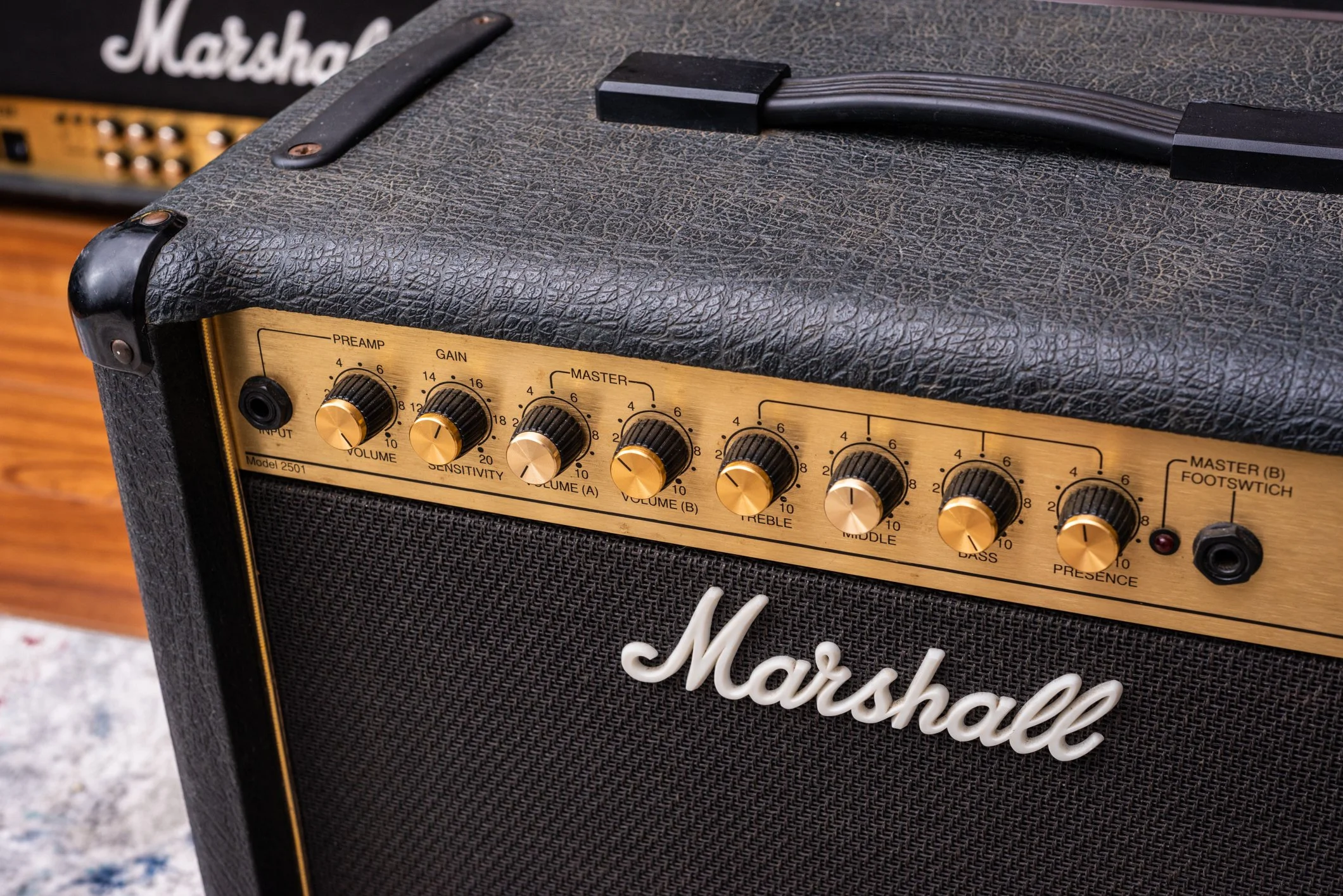1990 Marshall JCM900 MKIII Model 2501
Specs
Single Channel
50w Output
Later revision circuit
2x EL34 Power Tubes
3x 12AX7 Preamp tubes
V1A+B: First and second gain stages
V2A: Third gain stage
V2B: Tone stack cathode follower
V3: Phase Inveter
Switchable master volumes
Overview
When the JCM900 line came out in 1990, it was spearheaded by two main models - the “Mark III,” a continuation of the single channel JCM800 “Mk II” lead models, and the “Dual Reverb,” the continuation of the JCM800 split channel series. The Mark III was only available from 1990-1992, and in 1993 it was replaced by the “SL-X” models, sometimes called the “Mk IV” (not to be confused with the Mesa mark series). The Mark III and SL-X have very similar design, nearly the same front panels, and even the same model numbers (2100, 2500 and combos). However, there is one big difference - the Mark III has clipping diodes in the circuit, controlled by the “Gain Sensitivity” knob. The SL-X has this same control, but instead that controls a tube gain stage (more details on the SL-X page.
This Mark III is a 2501 model, which denotes a 50 watt model and a single 12” speaker, combo amp. The circuit is identical to the 2500 head, although the form factor is different - this combo is surprisingly portable and the chassis is not as wide as the full size head or the 2502 2x12 combo. An added bonus of this portable combo is a pair of carry handles on either side, like a 4x12, so it’s very easy to move around. The stock speaker is a Celestion G12-H100, one of my favorite speakers. This provides plenty of wattage handling for this 50 watt power amp even overdriven. It’s equipped with EL34s at this point, a brief window in which Marshall was able to source good EL34’s. In the late 80s, 6550’s were used instead, and by 1994 or so, they had to switch again to 5881’s due to supply chain issues. A unique feature of this specific amp, being very early in the JCM900 run, is that it has each control knob outlined with a black circle. This aesthetic design disappeared very quickly and wasn’t used beyond mid-1990.
Added features compared to the previous generation Mk II super leads are footswitchable dual master volumes and a clipping diode circuit that can be adjusted with the sensitivity knob. These diodes are located after tube gain stages 1 and 2, just before the V2 tube’s gain stage (third in the circuit). Unique to this amp, as compared to the later SL-X model, is that the sensitivity knob can be turned off (“10”). When set this low, the diodes actually don’t get enough voltage to clip - so even though they are technically still “in the circuit,” they are effectively just a wire between the V1B and V2A tube stages. This means you can get very close to the traditional 2203/2204 lead tones, with 3 tube gain stages and diodes effectively removed from the signal. On the SL-X, this control can never be reduced to zero because it kills the signal at that tube stage. It’s really a useful option on this amp to be able to go from the more classic super lead master volume tones into a slightly more modern clipped type distortion by adjusting that control. It adds plenty of grit and its location in the circuit I find to be quite pleasing and a good balance between retaining the tube tone and adding a little more overdrive before the power amp. Take a look at the diagram below (and compare to the diagram on the SL-X page too).
There isn’t much more to say, it’s a very simple amp design but clearly didn’t sell as well as intended as was redesigned a short time later to remove the clipping diodes for the SL-X model. Despite the similar circuit and control panel, it’s easy to justify having both as they sound very different from each other.



